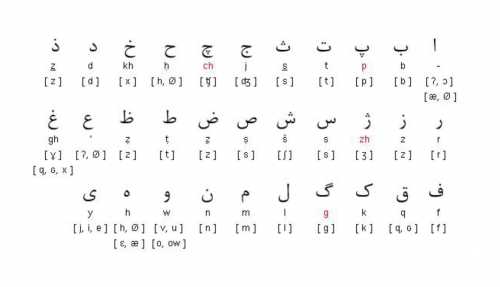History of Nastaliq Calligraphy:
After Muslim conquest of Persia (currently known as Iran), Persians adopted Arabic alphabet for Farsi language by modifying it. They added 4 new letters to 28 letters in Arabic alphabet and thus, the new Persian alphabet -based on Arabic letters- was introduced as 32 letters.

Contemporary Farsi Alphabet (32 letters)
Since the initiation of Islam in Persia, Islamic arts became widespread across the nation, therefore many Persian artists began working on various forms of Islamic arts, most importantly Islamic calligraphy and Islamic architecture.
Many prominent names arose in the world of Islamic calligraphy amongst the Persian artists, Ebn-Moqla Beyzaavi Shirazi and Yaqoot Mosta'sami to name a few.
During the first few centuries Persians -determined in preserving their own language and cultural heritage- made huge contribution to Persian literature and poetry. We see master pieces in poetry and literature emerging in that era. Roudaki and Ferdowsi, Sa'di and Rumi (Mowlavi), Hafez and Nezami are among the prominent poets on these few centuries (between 8th-14th centuries AD).
This was the time that Persian calligraphers who worked on Islamic calligraphy pieces were really interested in writing Persian poetry in calligraphy; however, they did not find Islamic/Arabic styles suitable for Persian Poetry. For this reason, in 14th century AD, a master Iranian calligrapher named Mir Ali Tabrizi, came up with the idea of creating a calligraphic style entirely based on natural curves. He got this inspiration when he watched a flock of geese flying in the sky... he immediately thought of a combination between two older styles Naskh and Taliq and having this combination based on a structure of natural curves. This was the moment that he came up with the idea of Naskh-Taliq that later was called Nastaliq calligraphy.